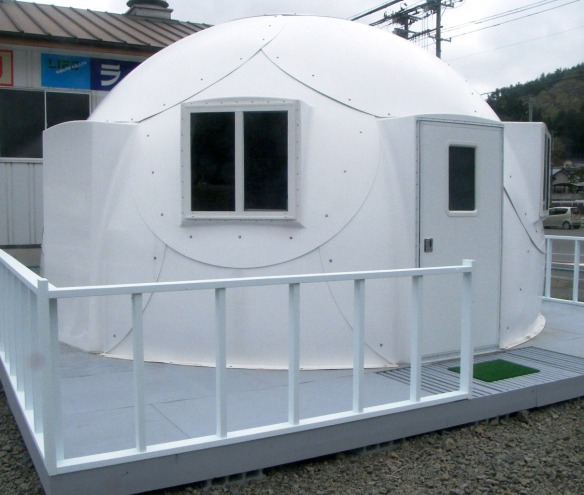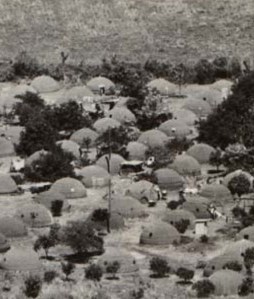Domes are a recurring theme in the design of post-disaster shelter products. These polyeurythane igloos were photographed in Nicaragua in 1976, and featured in Shelter after Disaster by Ian Davis (the book has just been updated, and is available as a pdf here)
Domes for the World
“The Domes’ compound curve makes them stronger than virtually any other structure. They are as disaster proof as a building can get and will withstand tornadoes, earthquakes, hurricanes and fire. They cannot be burned, eaten by bugs or destroyed by mold and will last for centuries. And because of the concrete’s thermal mass, the Domes’ interior temperatures remain stable.”

Intershelter Domes
The standard Intershelter Dome weighs 272kg and provides 14.3m2 covered area. For 5 people, this would provide 3.6m2 per person.
“There has never been a single solution to solving the homeless housing crisis the way our IntershelterTM Domes can. It is truly the “cure all” for this growing problem.”
The Intershelter dome seems to have a healthy market for applications other than disaster response in the USA.

Domes for Haiti
A labour of love, this project built a small number of geodesic domes (9, I think) in Haiti after the earthquake in 2010. The blog, including articles critical of the response by established disaster response agencies, is a fascinating history of the trials and tribulations of delivering such a project and what the chaos and shortfalls of disaster responses look like to those who aren’t inside the ‘system’.
There are many valid criticisms of the larger response to the Haiti earthquake, but it must questioned whether all this work, effort and money was worth spending on 9 temporary buildings.
http://domesforhaiti.blogspot.co.uk/
World Shelters
World shelters has several shelter products, each of which provide at least 3.5m2 per person of covered area, and are in accordance with the transitional shelter guidelines produced by Shelter Centre (see here). They must be particularly frustrated, because jumping through all the hoops to produce ‘compliant’ shelters I don’t think any have really been used in international relief. Whether the whole project of transitional shelter standards was misconceived or not, the ‘Better Shelter’ (here), supported by UNHCR, pretty much ended all competition.

The claim to be SPHERE compliant doesn’t stand up, as SPHERE is about a lot more than a product.
